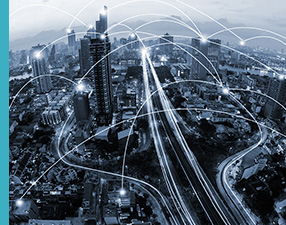News

Depleting resources and high costs have turned the world’s attention to renewable energy. We are fast seeing emergence of alternative fuels to coal, oil, etc. in biofuel, biomass, geothermal, hydropower, solar energy, tidal power sources. India is playing a crucial role in generating renewable energy and creating solutions for the global energy crisis.
According to Renewable Energy Country Attractiveness index 2018 by EY, the Indian renewable energy sector is the fourth most attractive renewable energy market in the world. As of October 2018, India ranked 5th in installed renewable energy capacity.
In fact, India ranked second among the emerging economies to lead to transition to clean energy, as per the Climatescope 2018 report.
The Indian Government is also actively taking up the cause of renewable energy by drafting policies to encourage the sector. It has a new hydropower policy for 2018-28 to boost growth of hydro projects, a US$238 million National Mission to adopt ultra-supercritical technologies for cleaner coal utilisation, custom and excise duty benefits for solar rooftop sector, and more. This has resulted in a burgeoning market with renewable power installed capacity in the country at 75.06 GW.
The Ministry of New and Renewable Energy is planning to grow renewable energy capacities in the country to 175 GW by the year 2022. This would make India one of the leading green energy producers in the world, surpassing numerous developed countries.
 To become a global leader, the need of the hour for this emerging sector is disruptive technologies that can boost operational efficiency, cut costs, ensure real-time monitoring and predictive maintenance, among other things. The lifeline or enabler to building such a digitised universe is robust internet connectivity.
To become a global leader, the need of the hour for this emerging sector is disruptive technologies that can boost operational efficiency, cut costs, ensure real-time monitoring and predictive maintenance, among other things. The lifeline or enabler to building such a digitised universe is robust internet connectivity.
Unfortunately, one of the biggest challenges that renewable energy plants face is lack of reliable connectivity as they are located in remote locations where there is low reach of fibre optic infrastructure and where traditional broadband cannot reach.
In such a scenario, the technology that can come to the rescue is VSAT. A satellite communication technology, VSAT can reach any remote location in the world and be the catalyst renewable energy businesses need to become truly digitised.
VSAT’s reliable connectivity can:









In conclusion
Bringing in reliable and robust connectivity is the first step towards building an intelligent renewable energy ecosystem. Renewable energy players need to explore the potential of VSAT and its capabilities in transforming the burgeoning sector.
Nelco, a leading player in the VSAT business, has built domain expertise in the renewable energy market over the years. It can help businesses build an efficient energy network that enables growth.
Talk to our experts and learn how your business can benefit from satellite connectivity.